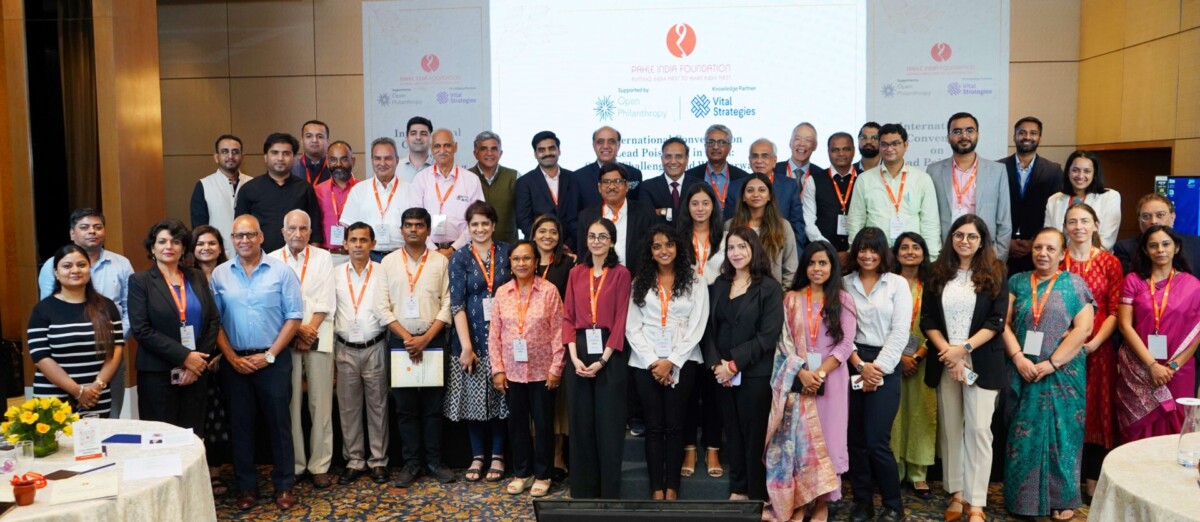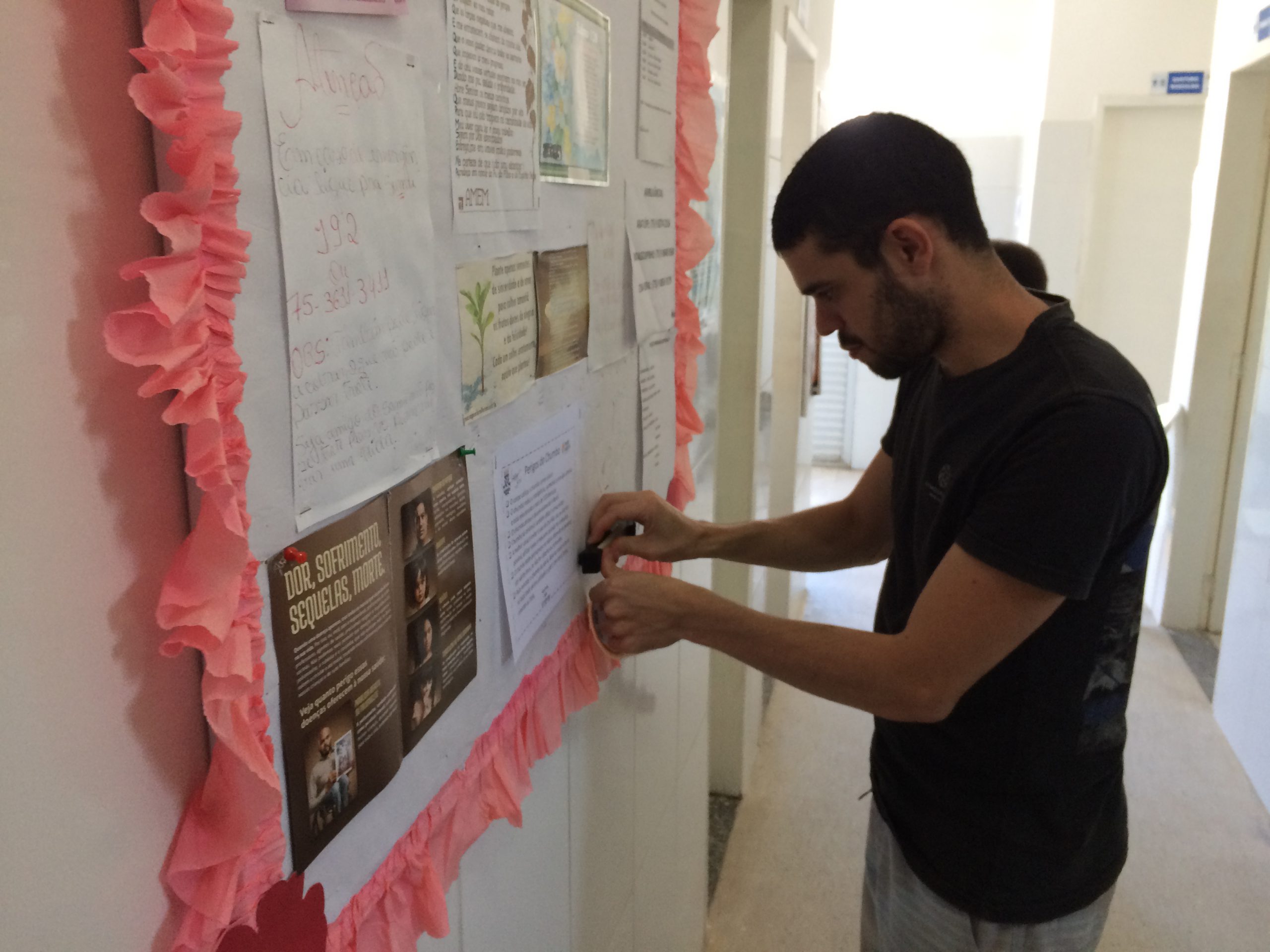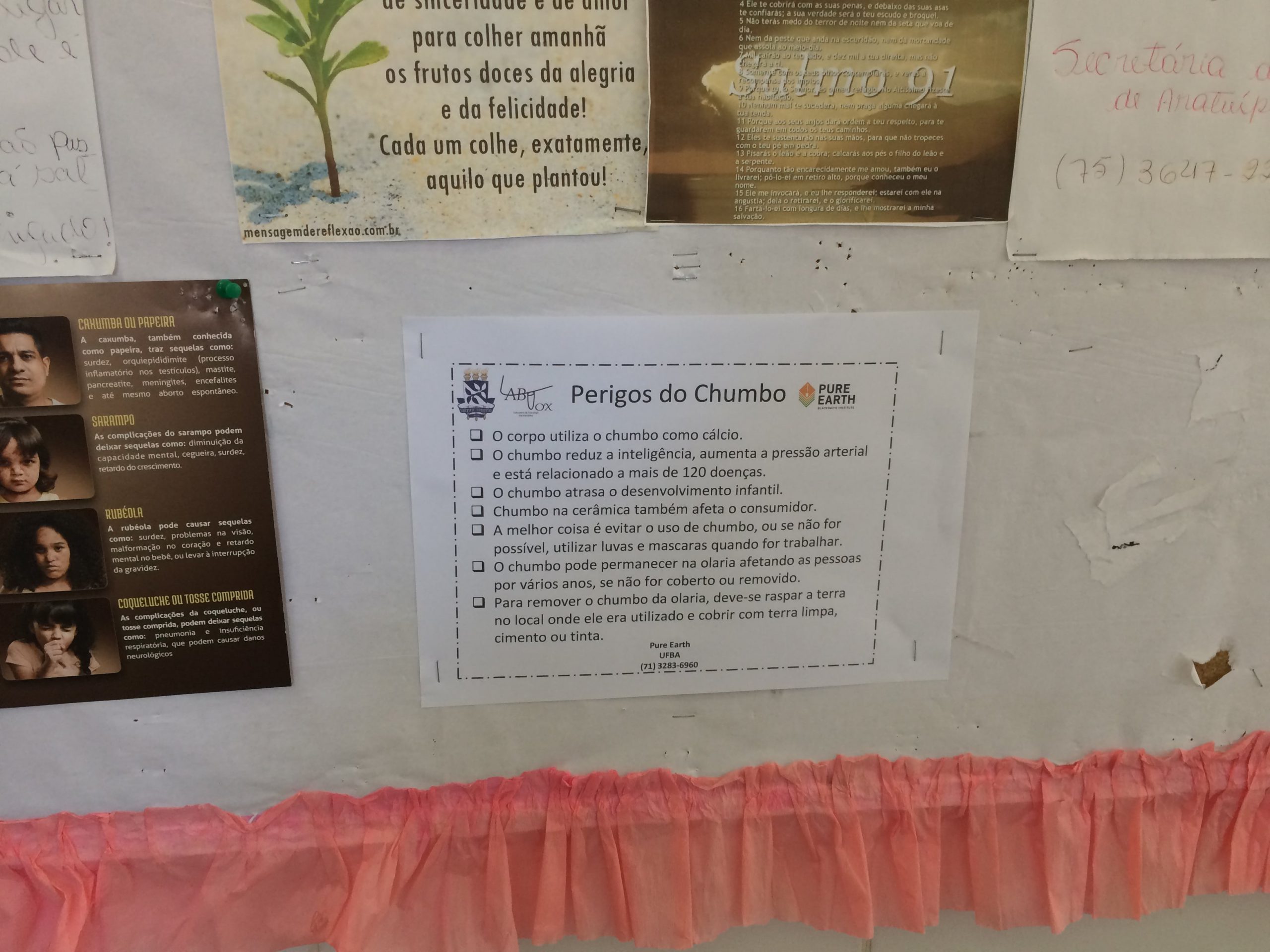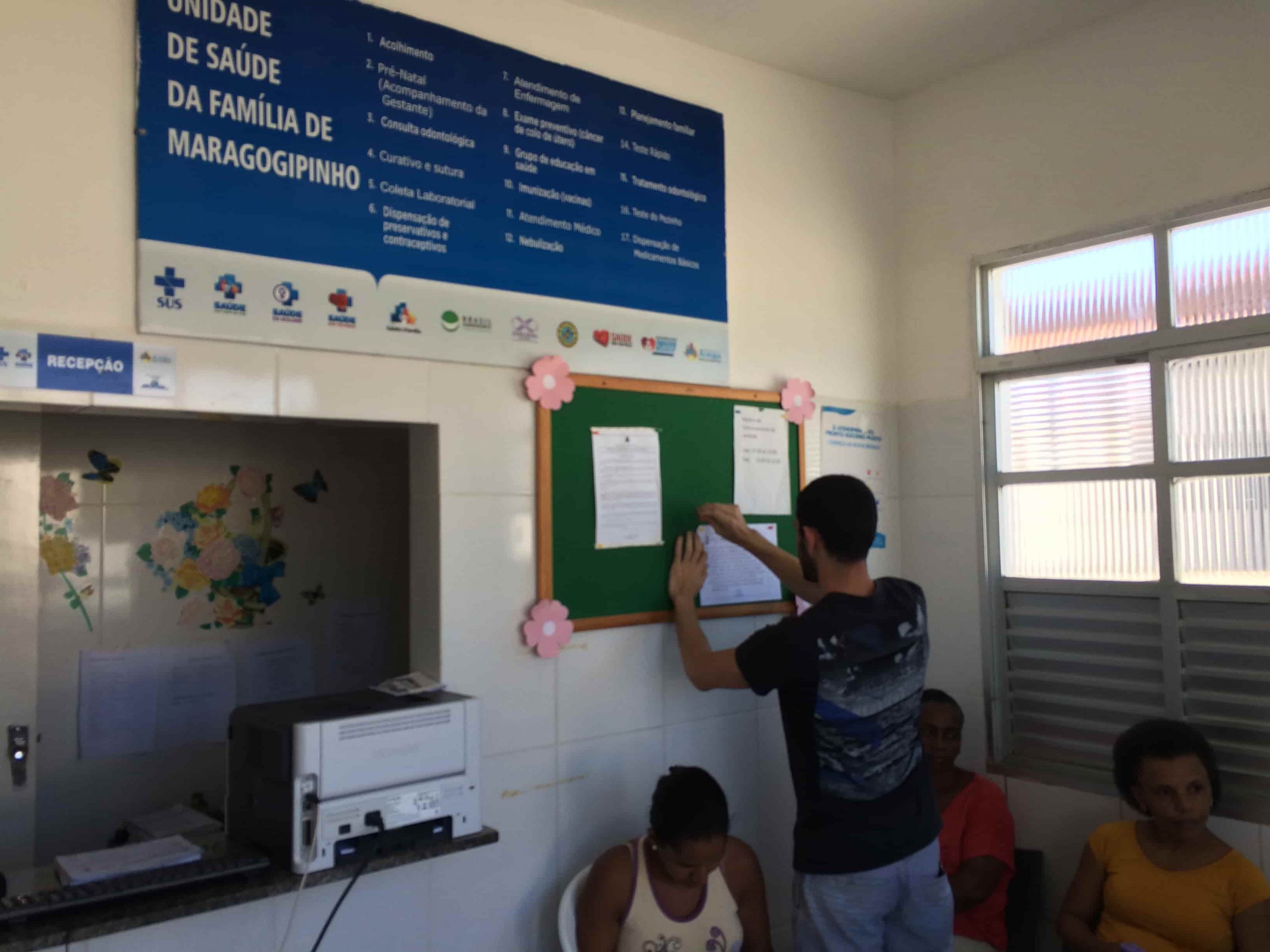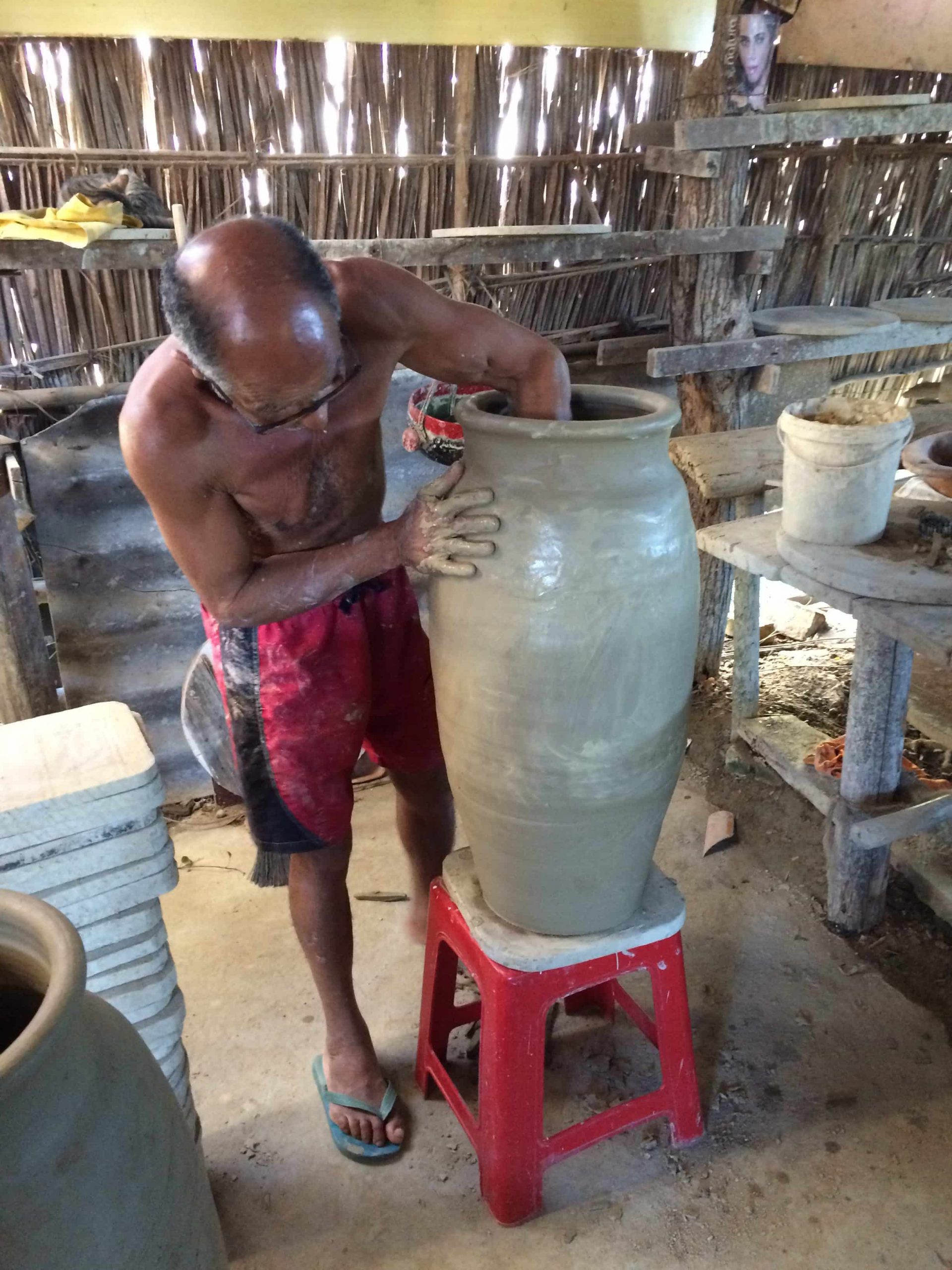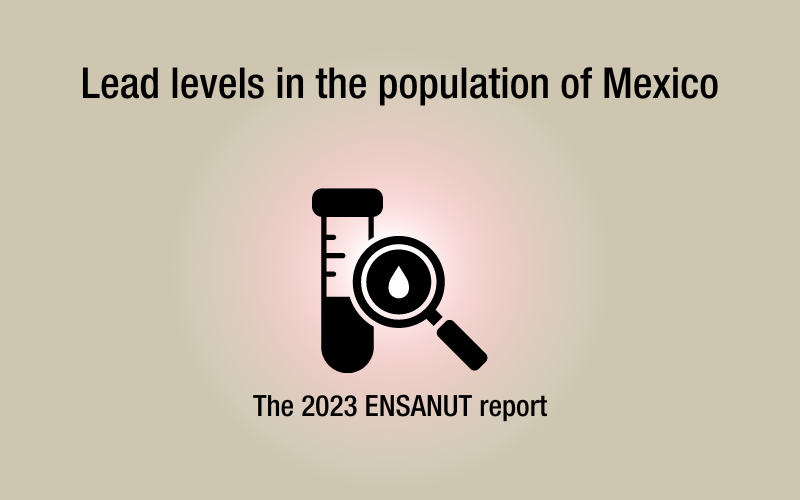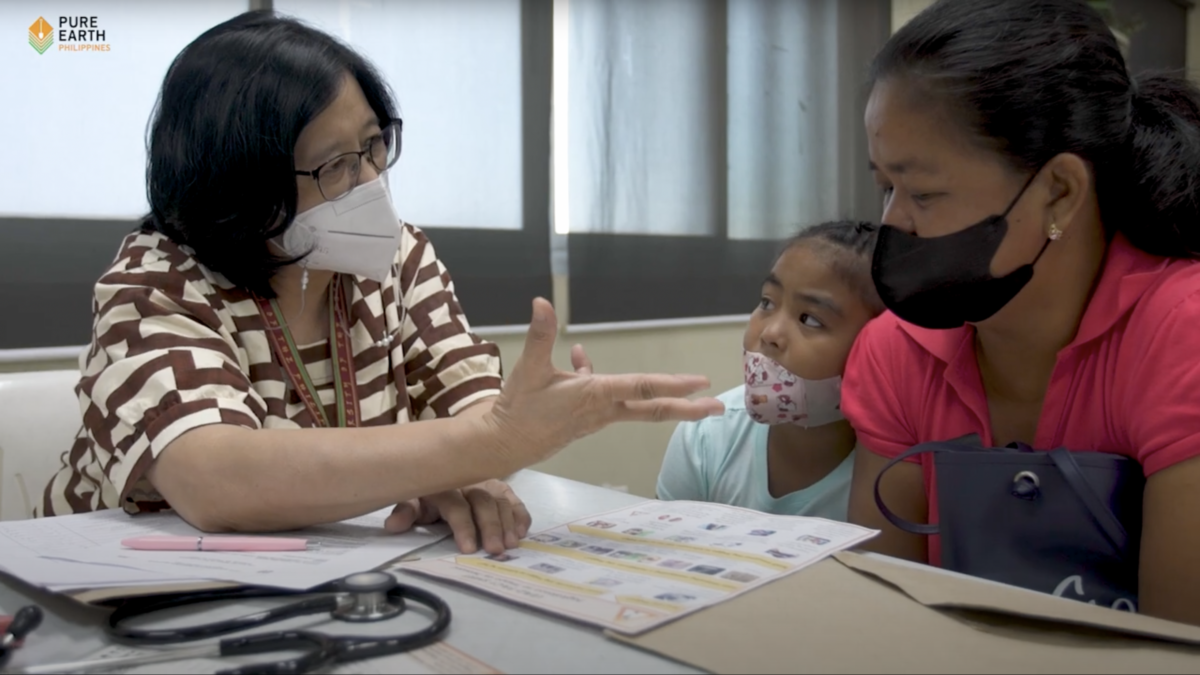In May 2018, Pure Earth held a lead-free workshop for nine potters in Maragogipinho, Brazil. This was an important first step in helping a community, where some residents had blood lead levels as much as 15 times above the EPA’s level of concern.
The problem in Maragogipinho is identical to that of Mexico and other countries around the world, where artisanal potters use lead-based glazes. Anyone who handles the pottery–from the artisans to their families and customers–may be poisoned. With about 100 active ceramic workshops and 80% of the community employed in these workshops, Maragogipinho needed support to reduce the risk of widespread lead poisoning.
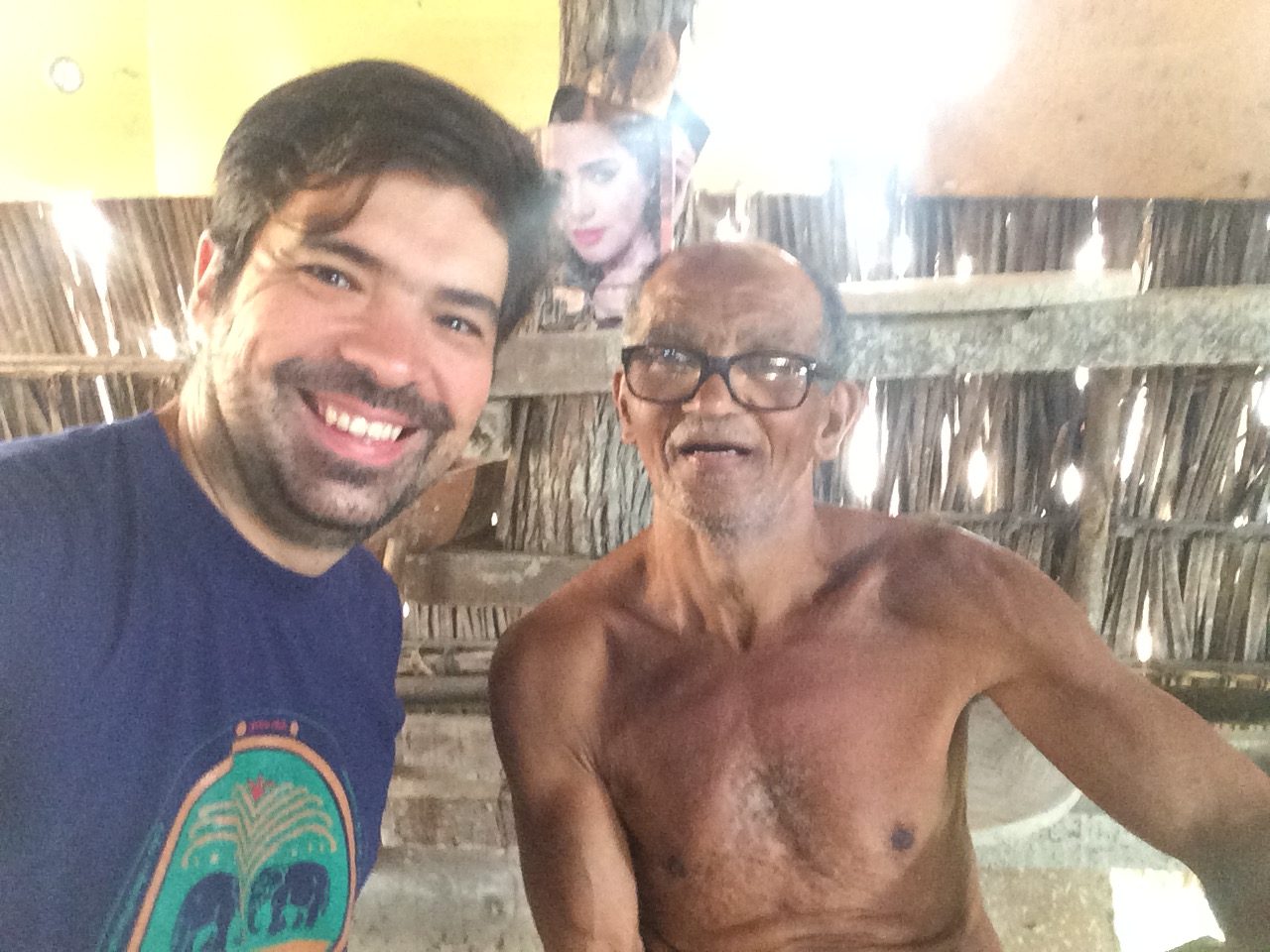 Daniel Estrada, who runs Pure Earth’s Barro Aprobado program in Mexico, with a local Maragogipinho potter.
Daniel Estrada, who runs Pure Earth’s Barro Aprobado program in Mexico, with a local Maragogipinho potter.
In August 2019, Pure Earth’s Mexico Director Daniel Estrada returned to Maragogipinho to check in on the potters trained last year, conduct cleanups, and to further promote the lead-free alternative method.
Daniel was joined by local scholar Matheus Bandeira, who is completing his master’s in toxicology at the Federal University of Bahia. Bandeira is writing his thesis on lead-use in pottery and has been visiting the Maragogipinho community regularly to educate artisans and monitor signs of lead poisoning in the population.
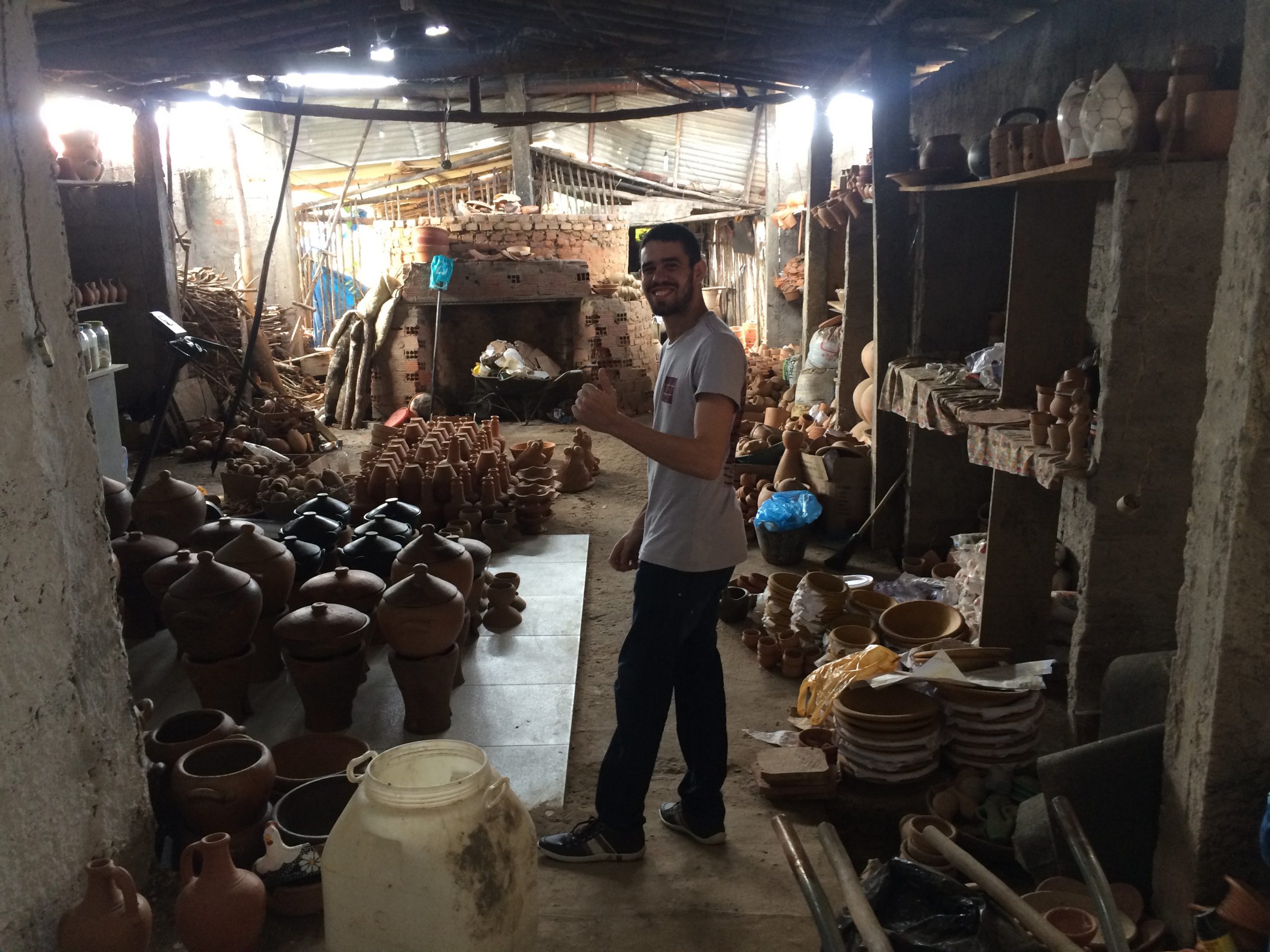
Local scholar Matheus Bandeira joined Pure Earth to help clean up contaminated workshops and educate potters.
Assessing and Cleaning Up Pottery Workshops
Daniel and Matheus visited all the potters who went lead-free to assess their workshops for any remaining sources of lead exposure. Together, they took 98 soil samples in nine workshops using a handheld XRF (X-ray fluorescence) analyzer, which can detect toxic particles in soil in about 30 seconds.
The project team discovered that among the potters who had gone lead-free, three workshops had lead soil levels above 400 ppm, the EPA’s level for concern for residential soil.
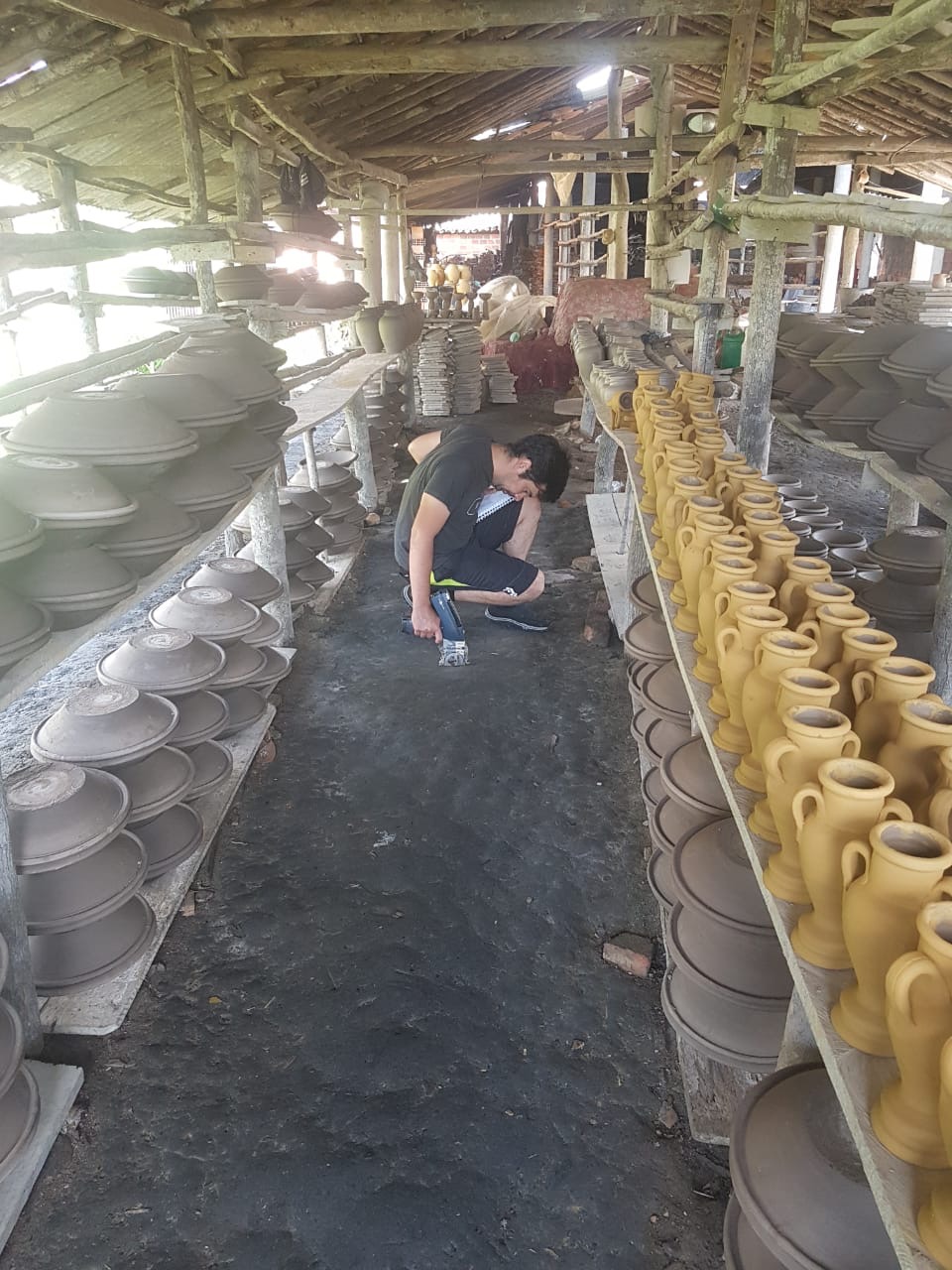
Using an XRF (X-ray fluorescence) analyzer to detect and measure levels of toxic lead in a pottery workshop.
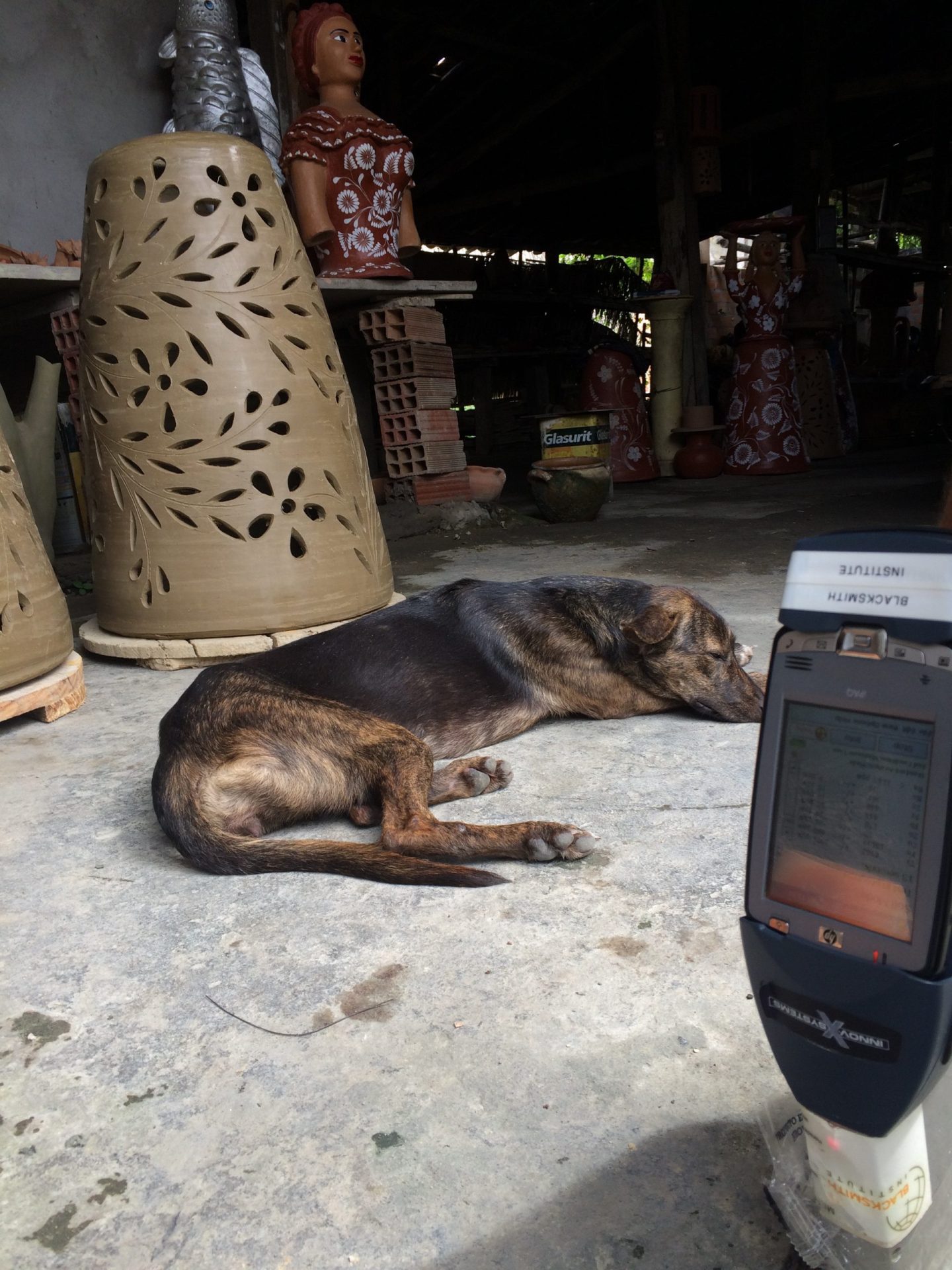
Guided by the results of the environmental assessment, Daniel and Matheus adapted a separate remediation technique to suit the conditions of each of the three highly contaminated workshops.
Workshop 1: In the first workshop, owned by a potter named Taurino, high lead concentrations were found on the cement surface of the pottery kiln. To remove the contamination, the team vacuumed and washed the surface, a laborious process given that Taurino’s shop lacks running water. Once the surface was dry, they applied three layers of paint to encase any residual contamination.
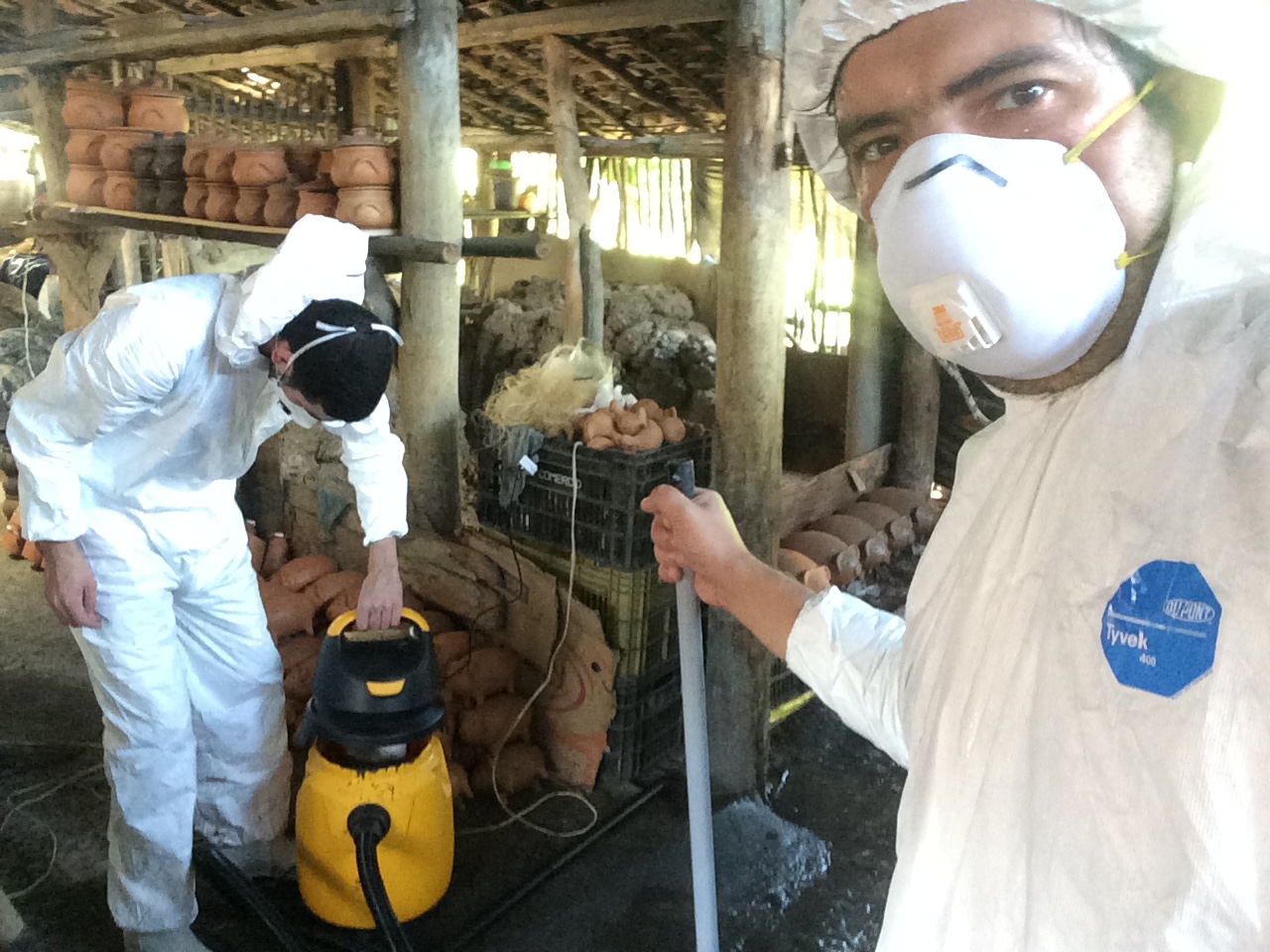
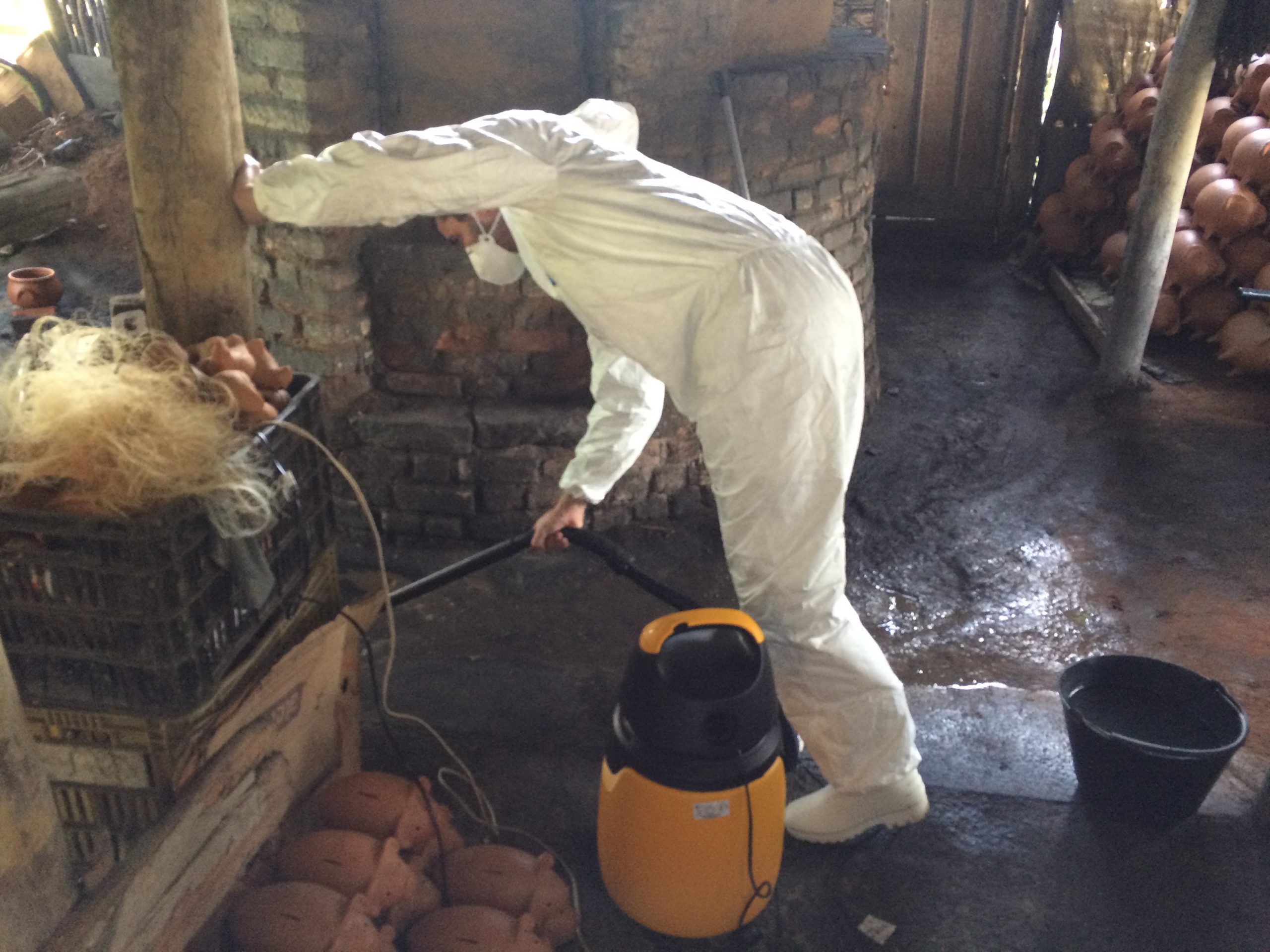
Workshop 2: Daniel and Matheus also found high lead presence in the workshop of a potter named Junior Arouca, this time on the dirt floor around the kiln. Since lead is difficult to separate from dust, the team removed the contaminated topsoil and applied a clean layer of soil over the floor.
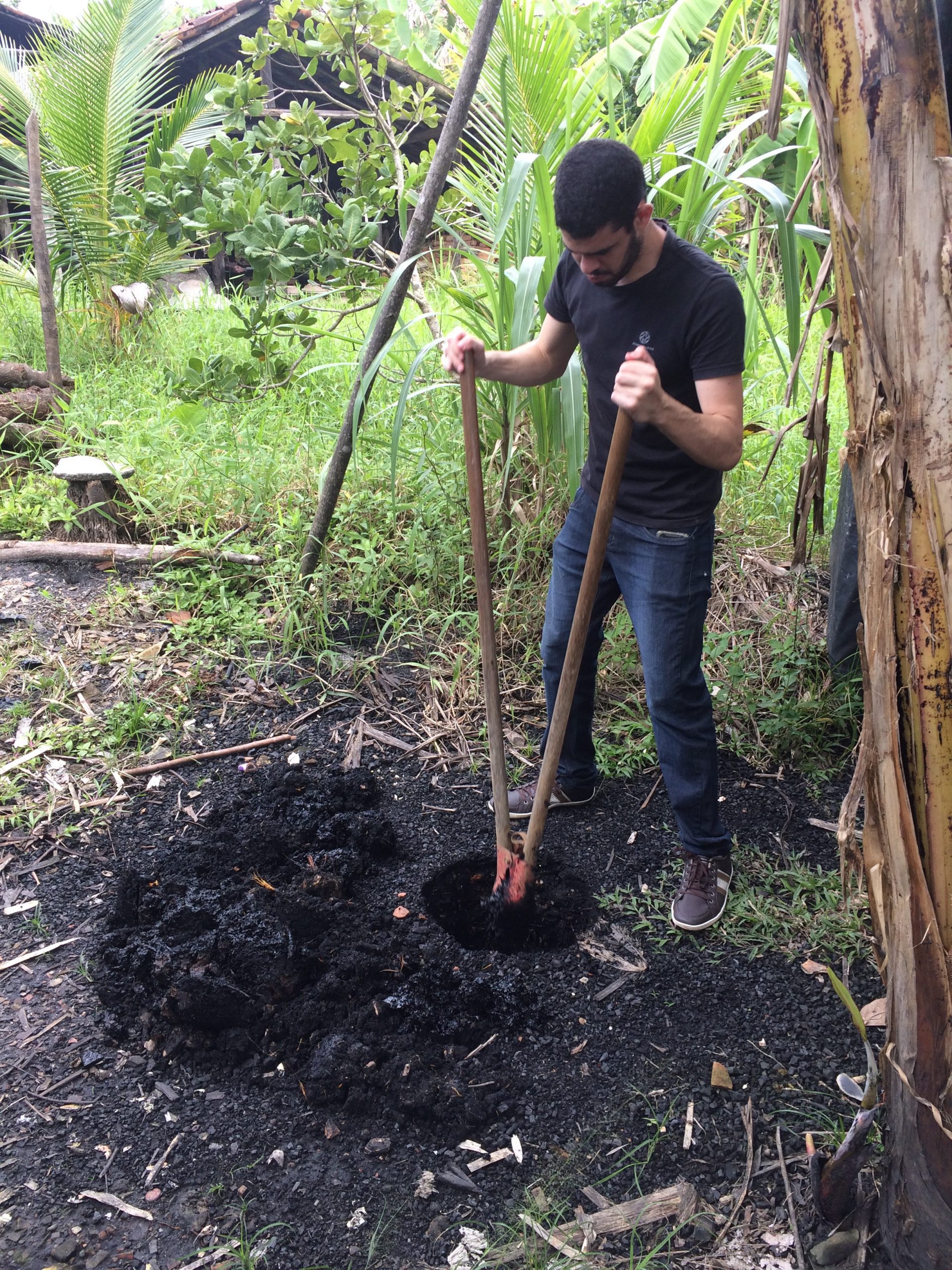
Workshop 3: Remediating the third workshop proved most difficult because much of the potter’s workshop was contaminated with lead. Daniel and Matheus agreed the best course of action was to install a new cement floor. Since laying concrete is a lengthy undertaking, the potter preferred to wait until October, when he plans to use instructions left by the team on how to properly encapsulate the contamination.
Spreading The Word
While cleaning up the workshops measurably reduced the risk of exposure for these potters, their families and neighbors, education is an equally powerful tool in protecting the local population from lead poisoning.
That’s why Matheus, now a respected member of Maragogipinho community, visited 32 artisans to personally discuss the problem of lead use and deliver a manual that will help them go lead-free.
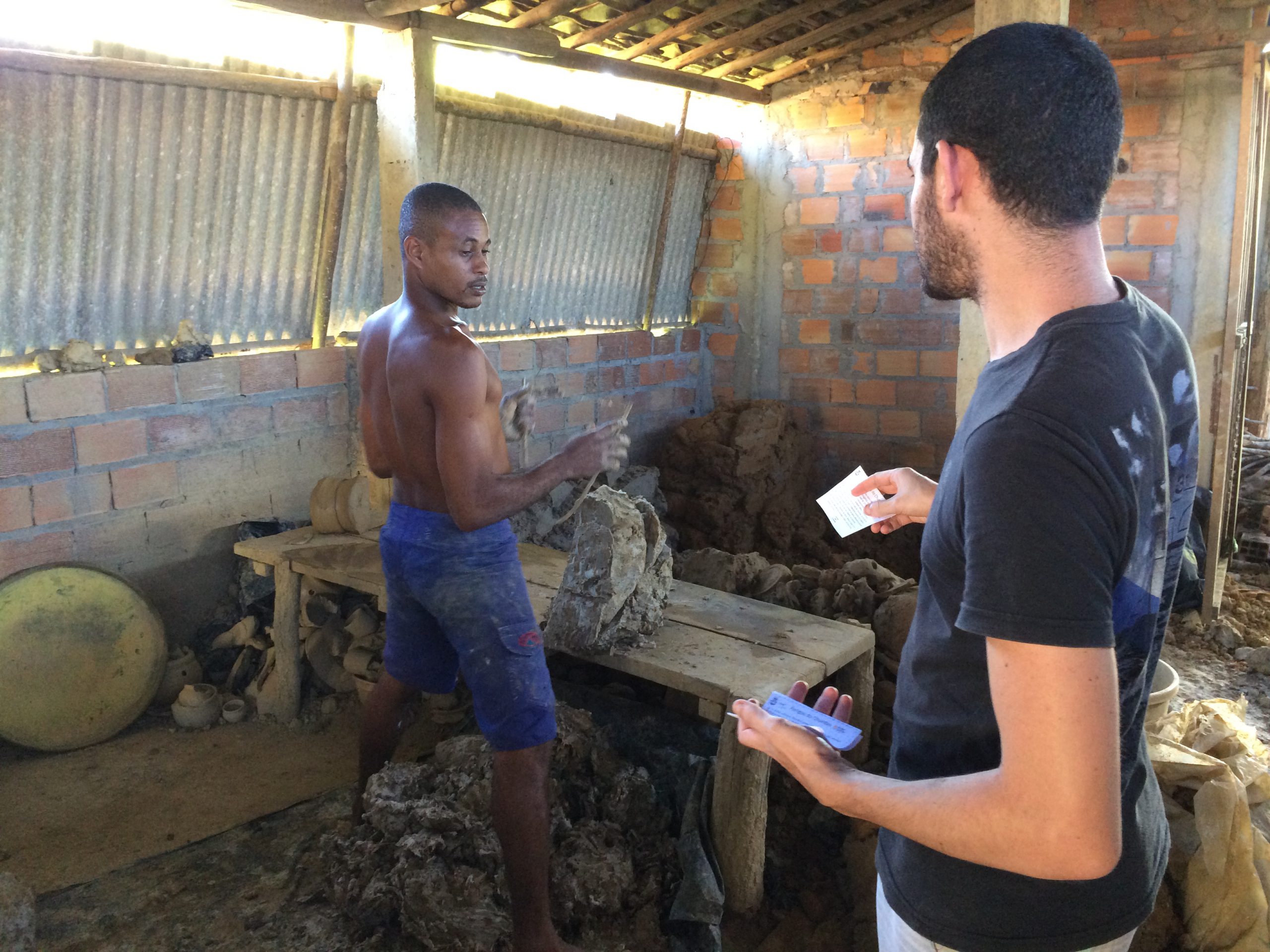
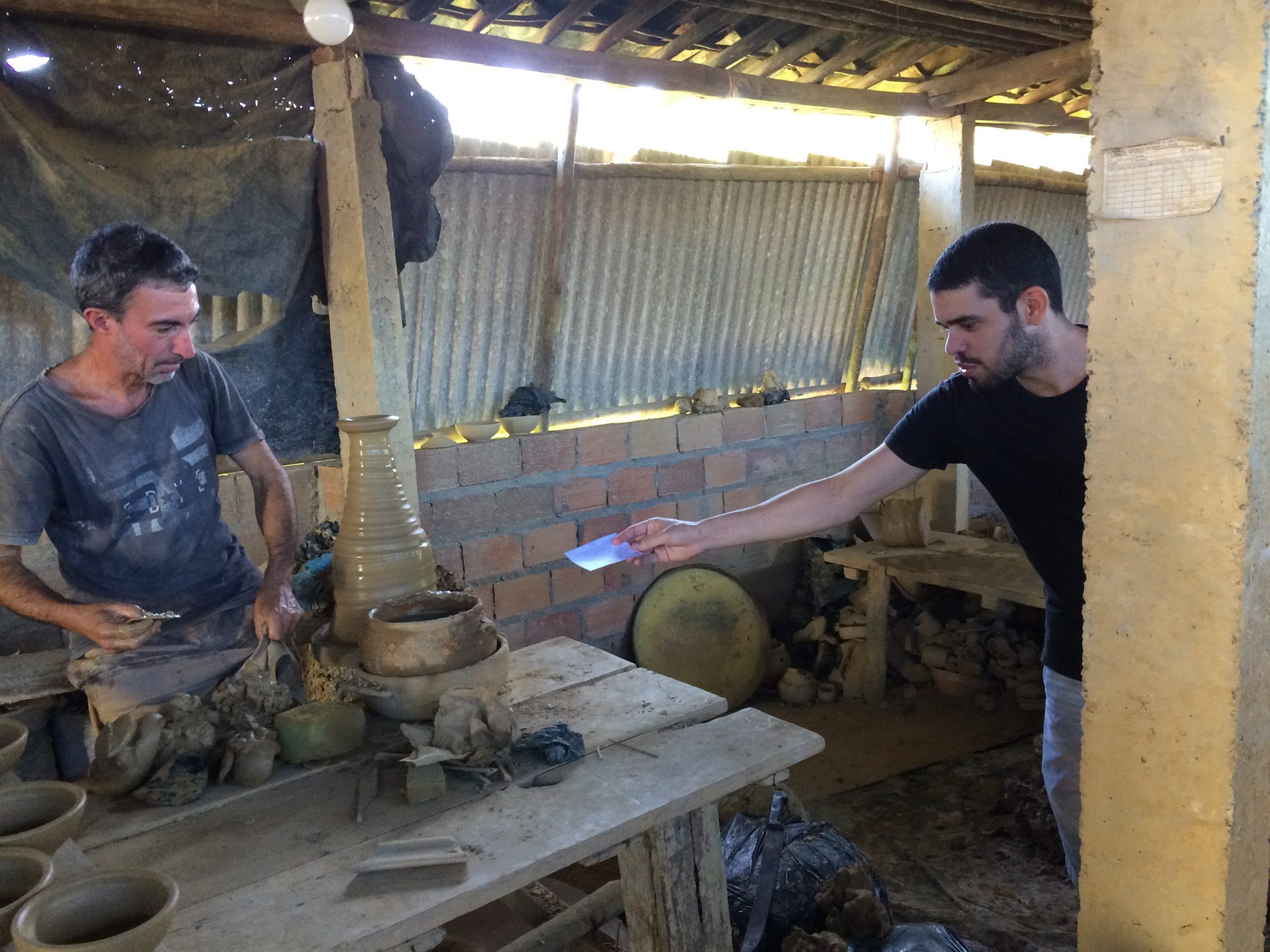
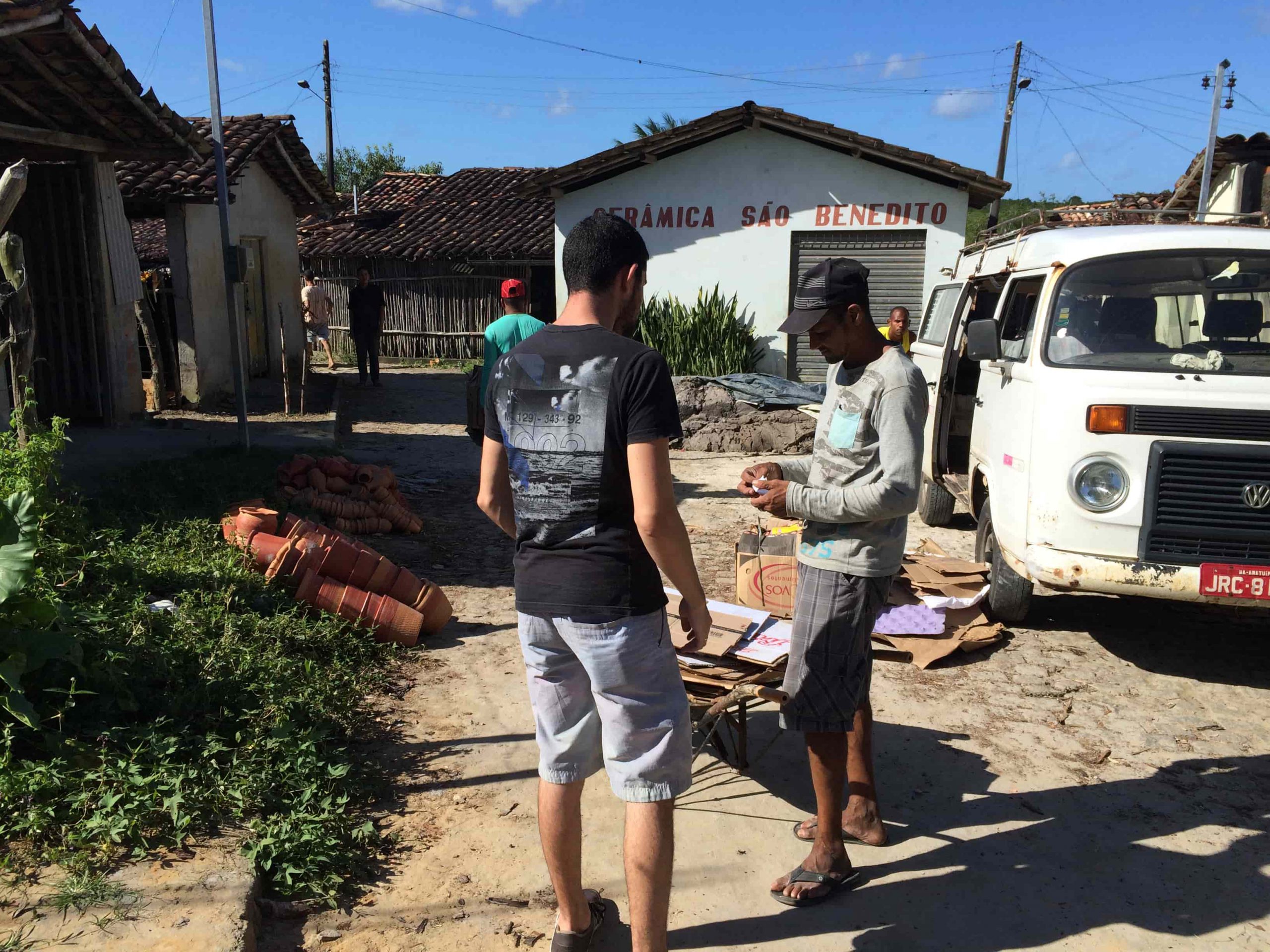
The manual was written by Pure Earth collaborator Víctor Águila, a Mexican potter and director of the NGO Barro Sin Plomo. It teaches potters about the dangers of lead exposure and offers a step-by-step guide on the triaxial method, which substitutes combinations of calcium carbonate, ground glass and clay for lead during production.
Matheus puts up educational flyers around the community.
Altering deeply ingrained traditions is never easy, but Daniel returned from Maragogipinho feeling optimistic.
“It was interesting to see that it has become common practice to paint the dishes used as offerings instead of using glaze,” he observed, “It seems the local market has accepted this new non-toxic product.”
With the potters in Maragogipinho continuing to receive support and education, a new non-toxic tradition is taking root.
This project was made possible in part by Legacy Alcoa Foundation.
This post comes from Charlie Espinosa, Latin America Program Associate. Charlie holds a master’s degree in Latin American Studies from Columbia University. In addition to working with Pure Earth, Charlie serves as a communications associate for the Amazon Aid Foundation and an archivist at Haverford College for a project on Latin American labor.
Related:
From Mexico To Brazil – Sharing Solutions To A Shared Pollution Problem

